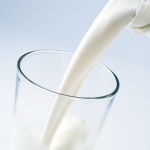 Many autistic/ADD children react poorly to milk products because of
Many autistic/ADD children react poorly to milk products because of
- inability to digest lactose
- opiate effect of casein
- high rate of IgG allergy to dairy
However if you decide that your child’s gut has reached a sufficient point of healing and you’d like to give dairy a try, here is some food for thought:
Many nutrition experts do not recommend drinking pasteurized milk of any kind – ever. Once milk has been pasteurized it’s pretty much “dead,” and offers little in terms of real nutritional value to anyone. (Whether you show signs of intolerance to milk or not.)
Valuable enzymes are destroyed, vitamins (such as A, C, B6 and B12) are diminished, fragile milk proteins are radically transformed from health nurturing to unnatural amino acid configurations that can actually worsen your health. Finally the eradication of beneficial bacteria through the pasteurization process actually ends up promoting pathogens.
The healthy alternative to pasteurized milk is unpasteurized milk, also known as “raw milk”. It is an outstanding source of nutrients including beneficial bacteria such as lactobacillus acidophilus, vitamins and enzymes, and is one of the finest sources of calcium available.
However, many moms I’ve spoken to are “freaked out” about drinking unpasteurized milk, thinking it’s dirty or unsafe. I can personally attest that I’ve consumed exclusively raw milk products for over 6 years, with zero problems. HOWEVER, it is important to get your raw milk from a trusted source. Ask your friends for referrals, and go visit the farm. Is it clean? Are the cows fed exclusively grass, out in a big pasture? Or are they fed grain, confined to small pens or barns, and standing around in their own poop? After what I’ve learned about Big Ag, I wouldn’t dream of drinking pasteurized milk purchased “sight unseen” from the grocery store.
It is important to also note that different breeds of cows yield different milk. “A1” cows are “newer” breeds that experienced a mutation of a particular amino acid (histadine) some 5,000 years ago. Unfortunately, A1 cows include the black and white breeds like Holsteins (and Friesians) that are the most popular breeds in North America. A1 milk contains BCM7 – a powerful opiate that can have a detrimental impact on your body. Histidine only weakly holds on to BCM 7, so it is liberated in the GI tract of animals and humans who drink A1 cow milk.
“A2” cows are the older breeds that do not have this mutation. The amino acid proline in A2 milk has a strong bond to the opiate BCM7, which helps keep it from being released. The older cow breeds, such as Jersey, Guernsey, Asian and African are primarily A2. (However, take note that the milk from A2 cows has been tested and shown to still contain some liberated BCM7.) Goats and sheep also produce the healthier A2 type milk.
You will likely need to find a small local farmer to provide your family with a source of raw A2 milk. Where I live the Amish community is a great resource. You may also find info through www.realmilk.com or local Weston A. Price chapters www.westonaprice.org. Some families have so much difficulty in finding raw milk, they opt to keep their own goat (or Jersey cow) in their backyard.
On GAPS we are only allowed “milk” if it has been fermented into yogurt or kefir. The fermentation process consumes the lactose (milk sugar) which is problematic to GAPS patients. (We cannot cook with yogurt because this essentially pasteurizes it.)
Technically the SCD and GAPS both “allow” hard aged cheeses (because the lactose is consumed during the aging process). However I would advise against them unless they are made with raw milk, and therefore I do not cook with them.
Remember that yogurt, kefir, and hard cheeses made with raw milk still contain casein. If you child cannot tolerate casein, then these products won’t work for you.
The one exception to “don’t heat your dairy” is ghee (clarified butter). Since butter contains no lactose, and we remove the milk solids while making ghee, we are allowed to cook with ghee. It has a high smoking point, so ghee is a perfect oil to cook with.



